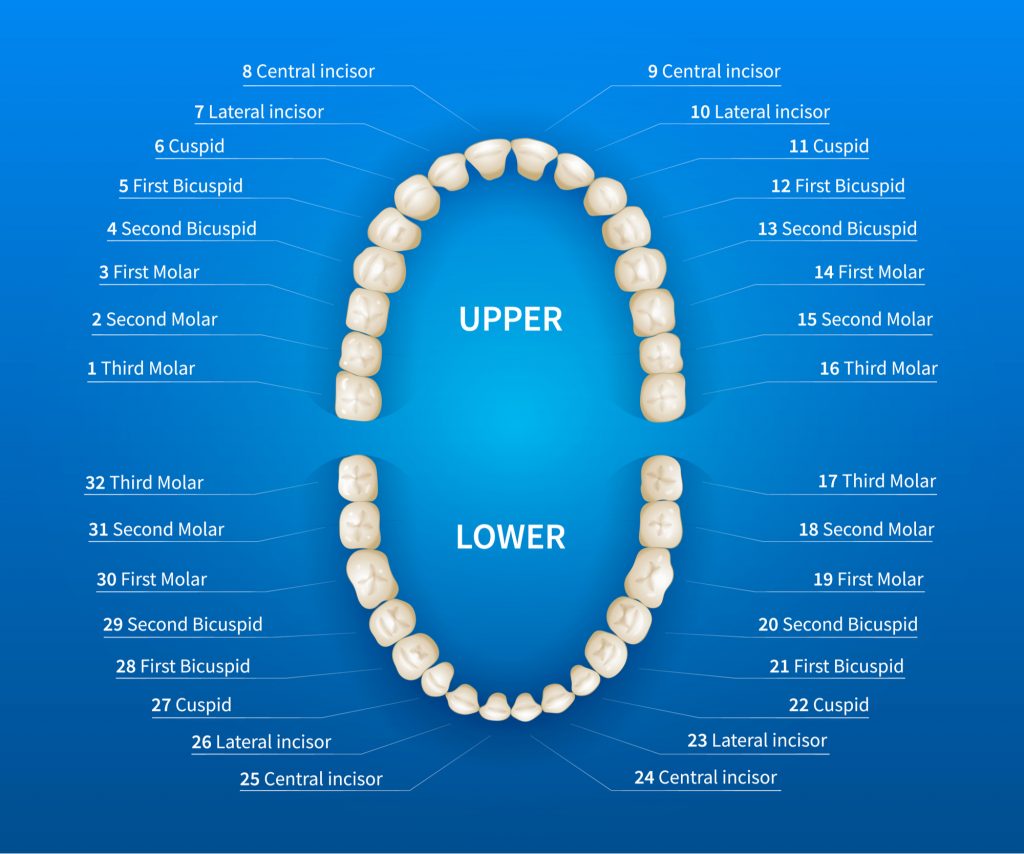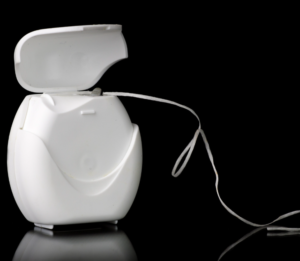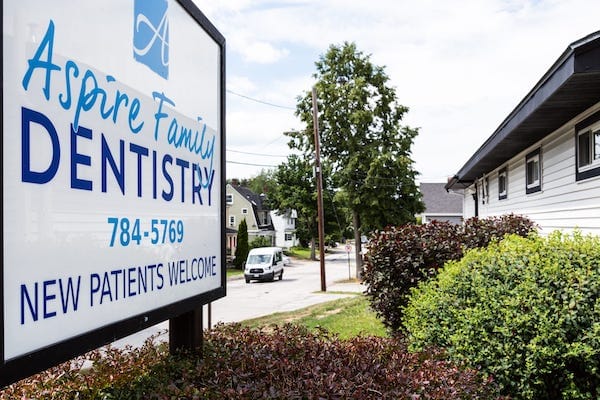As a parent, tracking your child’s health and development is probably very important to you. That is why one of the most common questions that parents ask family dentists are when should my child’s teeth erupt, and are they on schedule. It is important to understand that every child is different, and in many cases tooth development can happen out of order or before/after normal schedules and still be completely healthy. That being said, the best thing you can do for your child is bring them to a family dentist to track their development. In this article we will go over average tooth development for baby (primary) and adult (permanent) teeth.

When Should My Child's Baby Teeth Come In?
Most people are born with exactly 20 baby teeth. And eventually, all 20 of these teeth will erupt and fall out to be replaced by the 28 (32 including wisdom teeth) permanent teeth. Here is when you can expect your child’s baby teeth to show up:
- 6-10 Months: Most Children’s first two teeth are their bottom incisors (or front teeth). Around this time you should make your first dental appointment for your child so that you can start tracking the health of their teeth as they come in.
- 8-12 Months: Following the two bottom central incisors the two top central incisors come in around a child’s first birthday.
- 10-16 Months: Following the central incisors, the four lateral incisors will come in before or after a child’s first birthday.
- 1-2 Years: Between your child’s first and second birthdays they will likely get their first set of four molars as well as their four canines (the sharp teeth between the molars and incisors).
- 2-3 Years: Between ages two and three the final four teeth will arrive. This is your child’s second set of molars and marks the end of their teething period. At this point, your child will have all 20 of their baby teeth. And they likely won’t start losing teeth until around age 6.
When Should My Child's Adult Teeth Come In?
- Age 6-8: When your child is around six to eight years old they will lose their incisors and replace them with the adult teeth. For many kids the central four incisors fall out first followed by the lateral incisors. At the same time a new set of adult molars will show up behind their current molars. These teeth do not replace any baby teeth.
- Age 8-10: At this age your child will see their canines fall out and get replaced with new adult canines.
- Age 10-13: In the pre-teen years your child’s baby molars will fall out and be replaced by premolars. There are a total of eight premolars that sit between the adult molars and the canines. Additionally the second set of adult molars will arrive behind the first set. Once again, these molars will not be replacing any teeth. This will mark the end of your child losing their baby teeth.
- Age 16-20: As your teenager grows up and gets towards the end of high school their third set of molars (wisdom teeth) may begin to erupt. However, for many people wisdom teeth need to be surgically removed because they are unable to grow in due to a lack of space. Other people are actually born without these molars.
Child Tooth Eruption FAQ
The most common reason a permanent tooth does not erupt through the gums is because there isn’t enough space for it. Sometimes nearby teeth need to fall out before the permanent tooth will come up. There are some rarer cases where a primary (baby) tooth is lost earlier than it should be (potentially due to an injury) which can explain why the adult tooth hasn’t come-in. Even rarer, ankylosis is a condition where teeth cannot erupt because they are stuck to the jawbone. Generally the best thing to do is wait, and if you are worried about a tooth not coming in, talk to your dentist.
Two rows of teeth is fairly common. However, it can cause issues with alignment. When adult tooth grows in behind a primary tooth before the tooth falls out it can cause issues with your child’s bite. If the tooth is not wiggling or not coming out naturally, do not force it out. Call a dentist and they will address whether or not the tooth needs to be extracted.
If one of your child’s baby teeth is not falling out it could be for a variety of reasons. Most of the time the right choice is to wait and encourage your child to wiggle their tooth until it comes out naturally. Never force a tooth out or pull it out. If you are concerned that a tooth won’t come out naturally, call a dentist and they can help with a safe extraction if needed.
Another common issue is that a permanent tooth does not follow the path of the primary tooth. This is common with canines and bottom lateral incisors. In some cases a dentist will need to remove the baby teeth in these areas to help the permanent teeth get into the right positions. Otherwise, braces may be necessary to correct crooked teeth.
Read More About Dental Procedures:

Why Do Gums Bleed When You Floss?
Bleeding gums are a common sign that you might have gum disease or other oral issues. But that isn’t always the case. In fact, there

Does Going To The Dentist Fix Bad Breath?
Bad breath is a common concern for many people. It can be off putting to coworkers, friends, and other people in the vicinity if you
What Causes Cavities?
If there is one thing you do not want to hear at the dentist’s office, it is that you have a cavity that will need
What Happens At A Dental Cleaning
Ask any dentist in the country, you should be seeing a dentist for a regular checkup at least twice per year. In fact, almost every
How Do I Handle A Cracked Tooth
A cracked or chipped tooth is a common dental issue. It can be caused from anything from a sports injury to biting down on a
Do I Need A Tooth Extraction?
A tooth extraction is often the last resort for dentists. When at all possible, dentists look for ways to save a tooth either with dental

